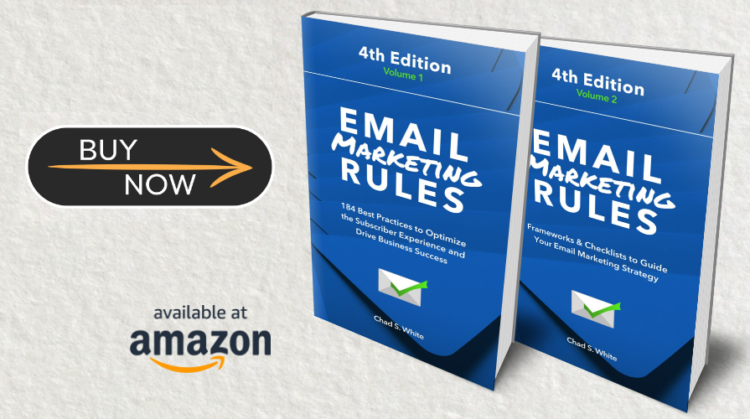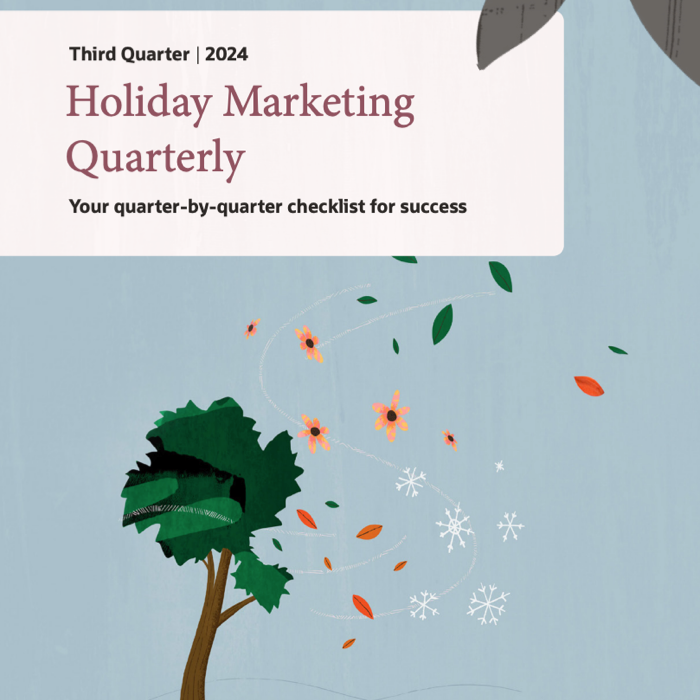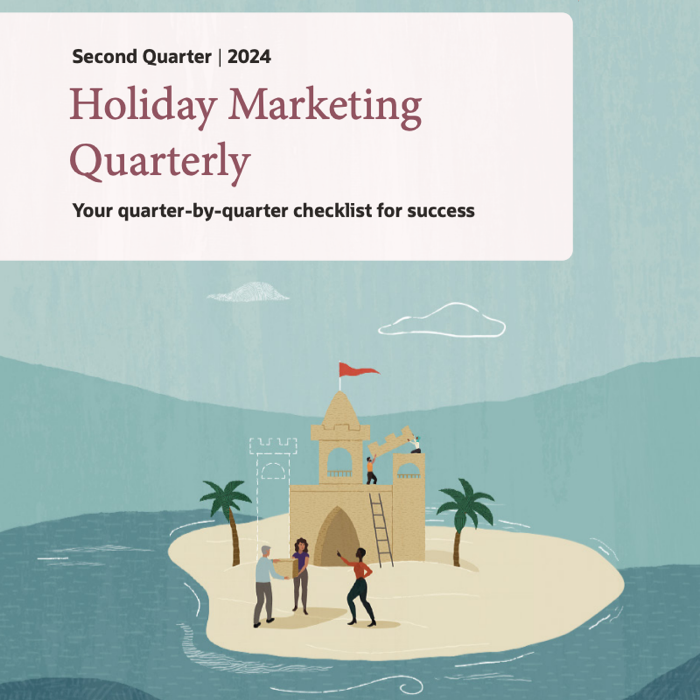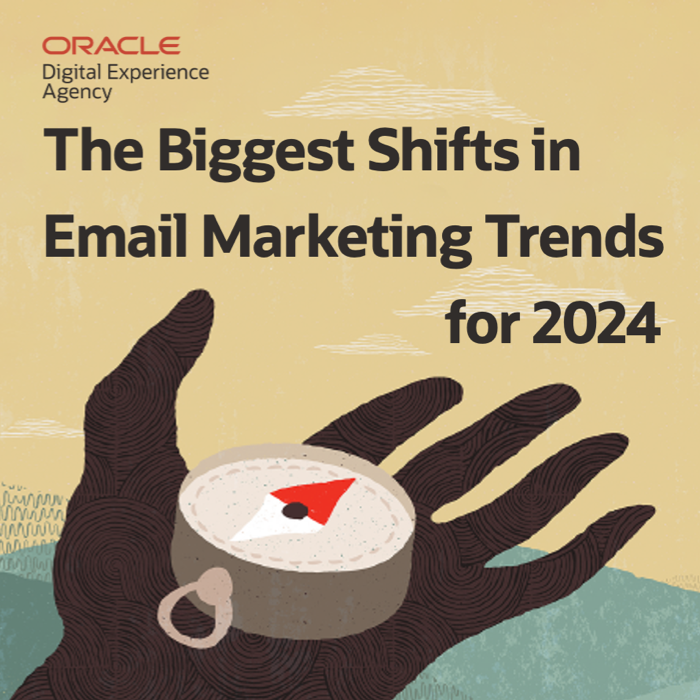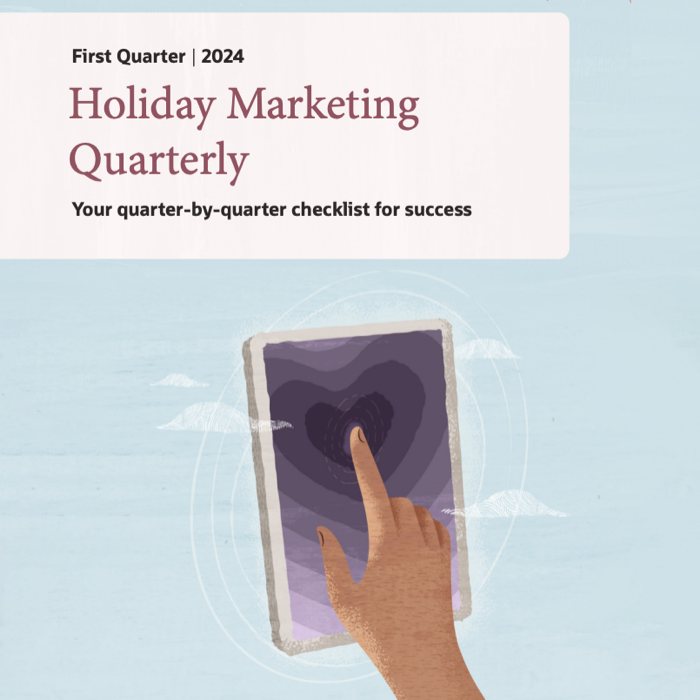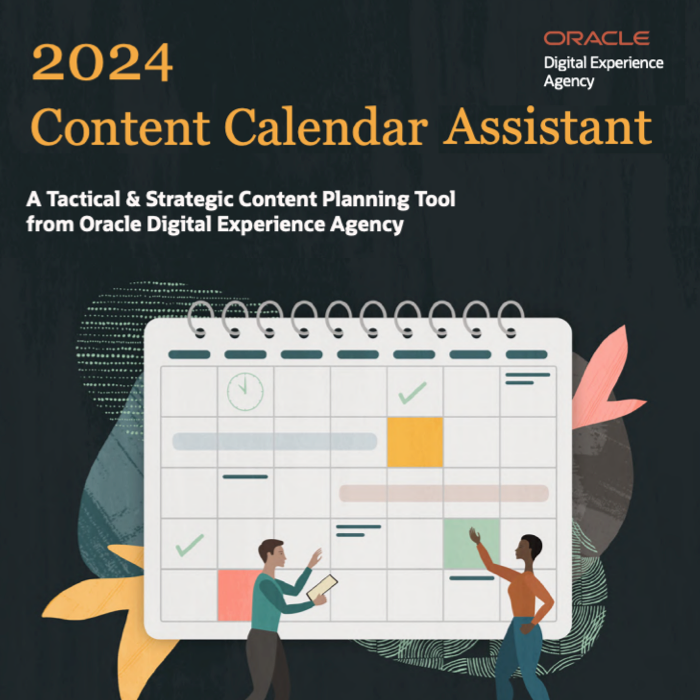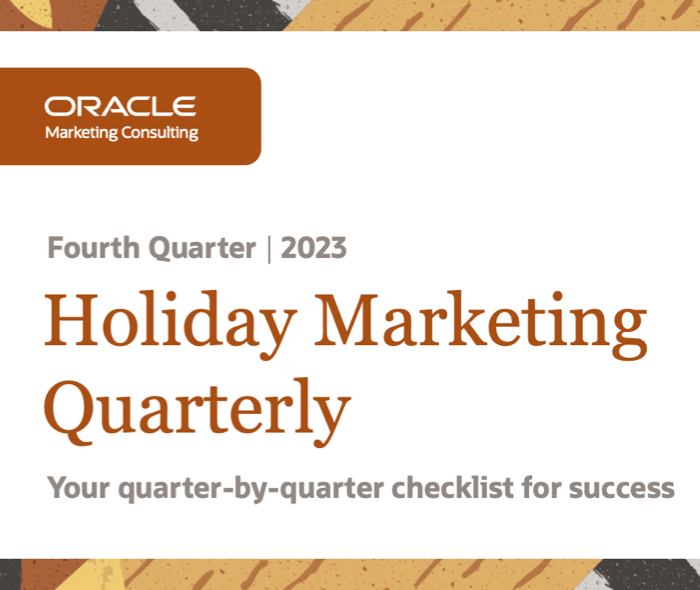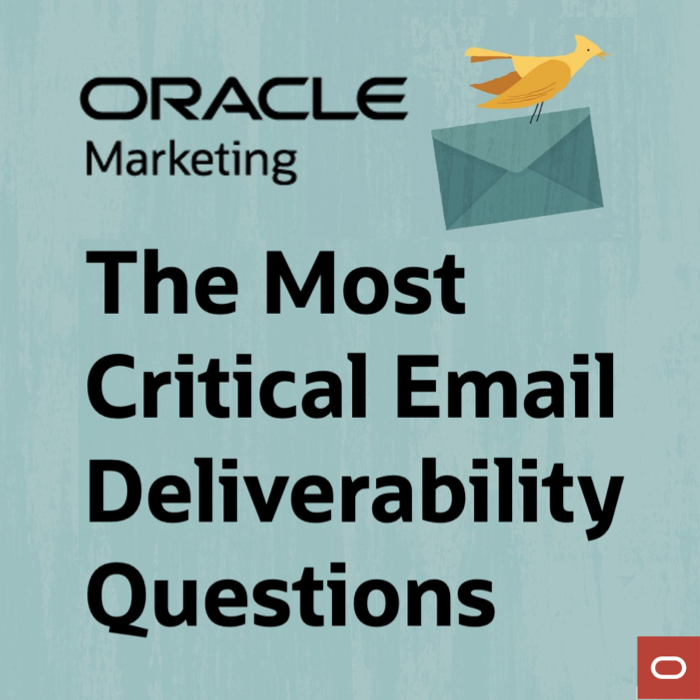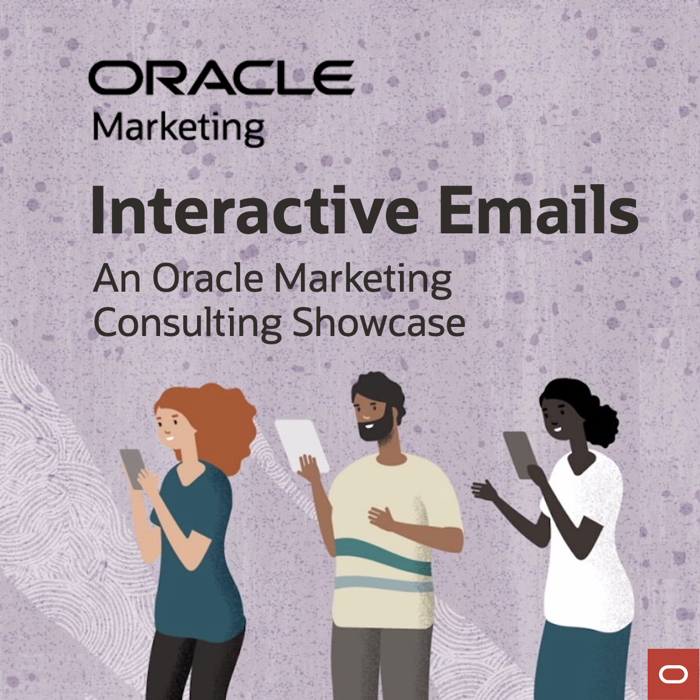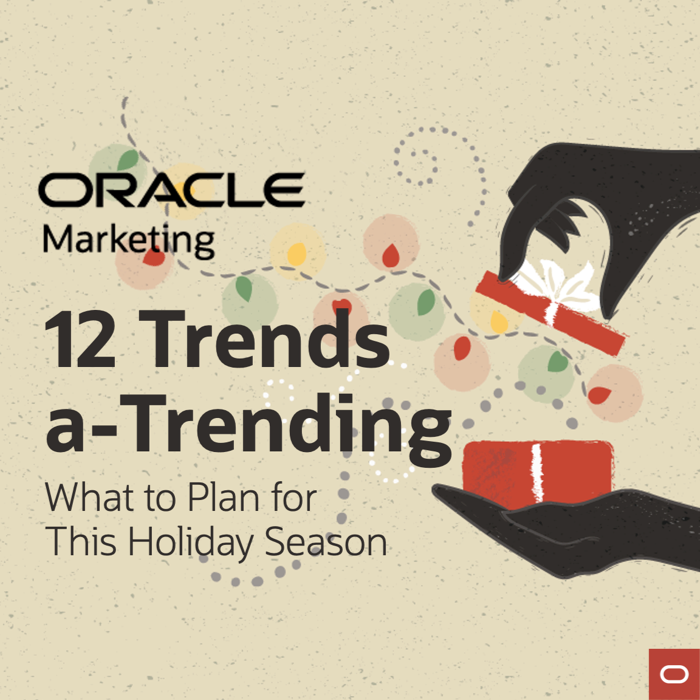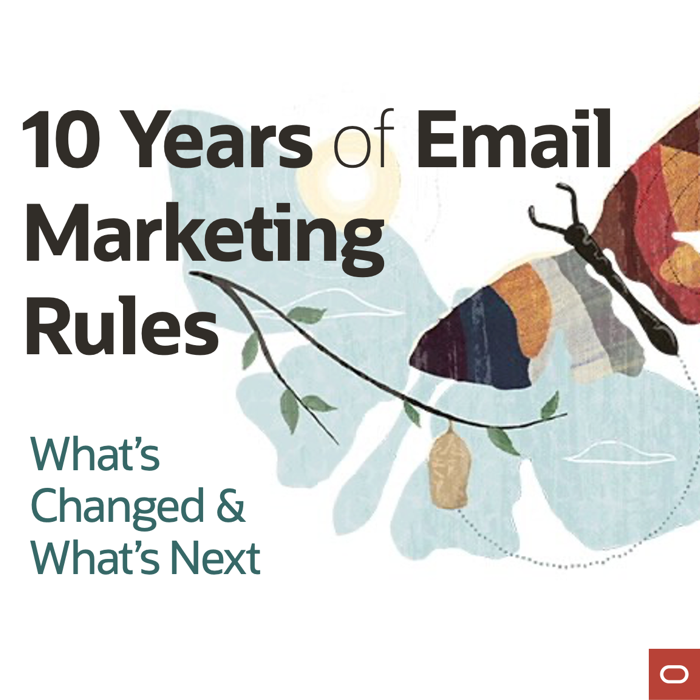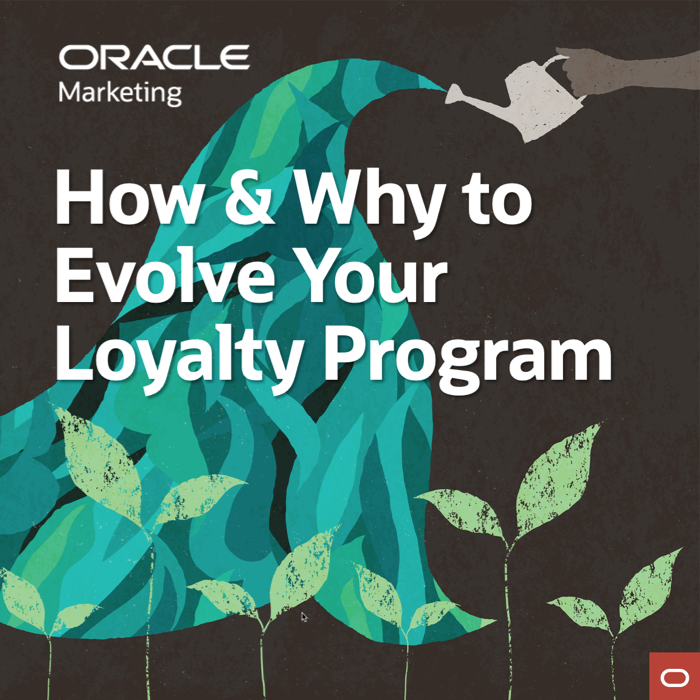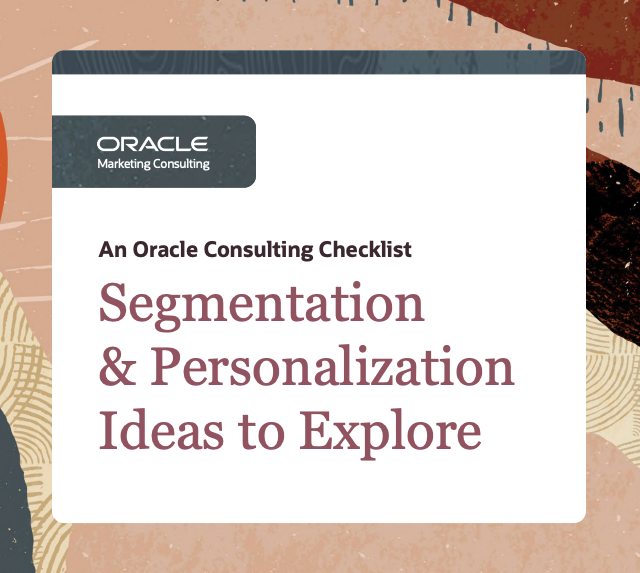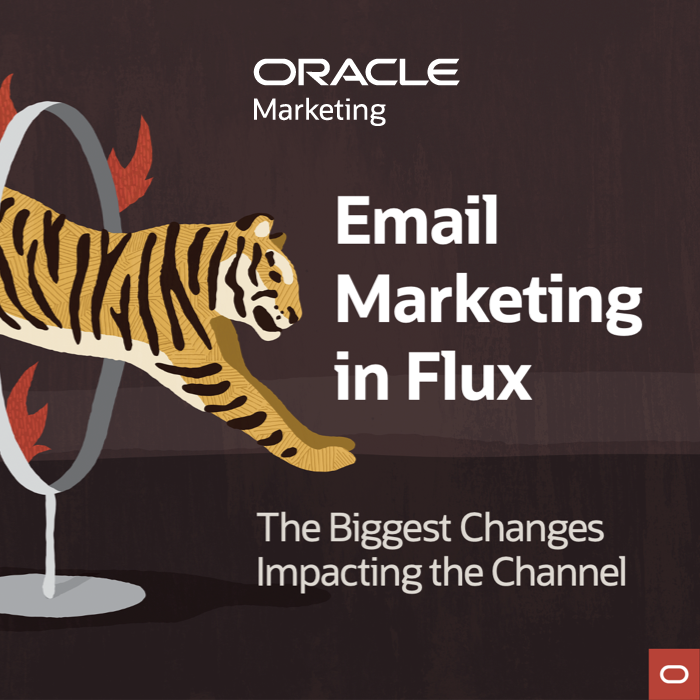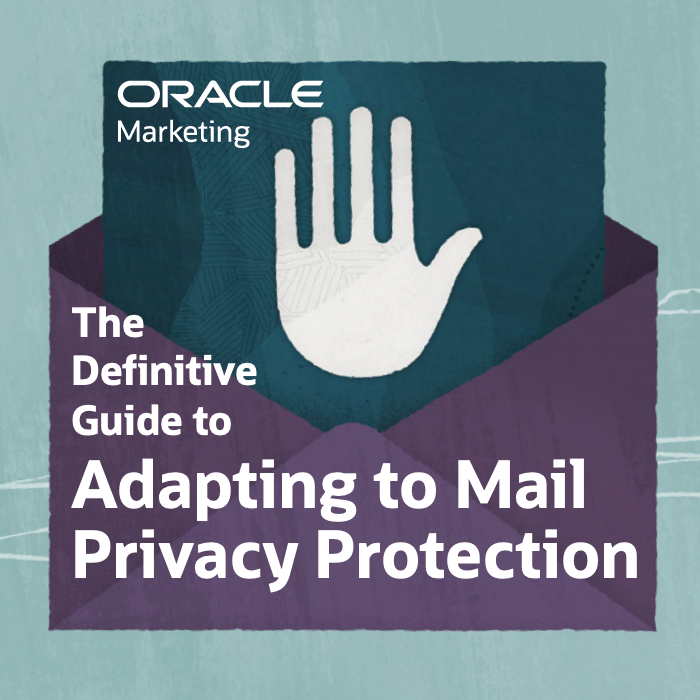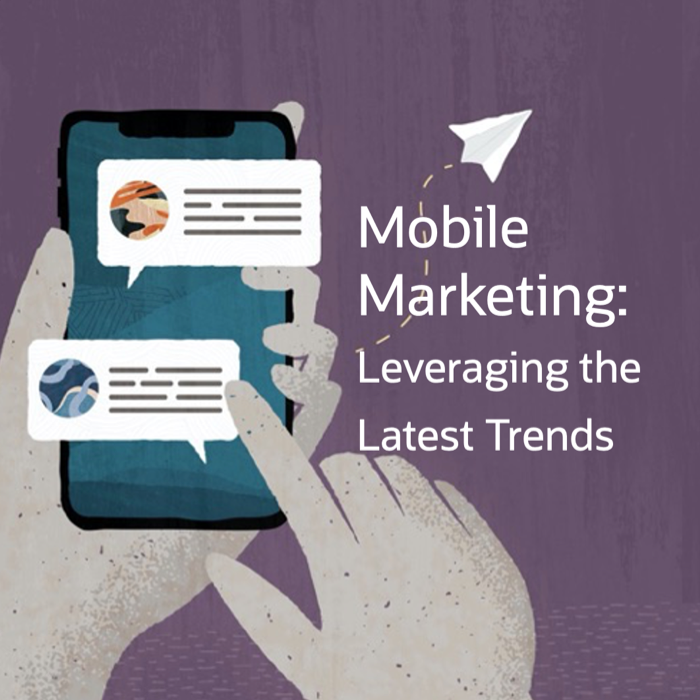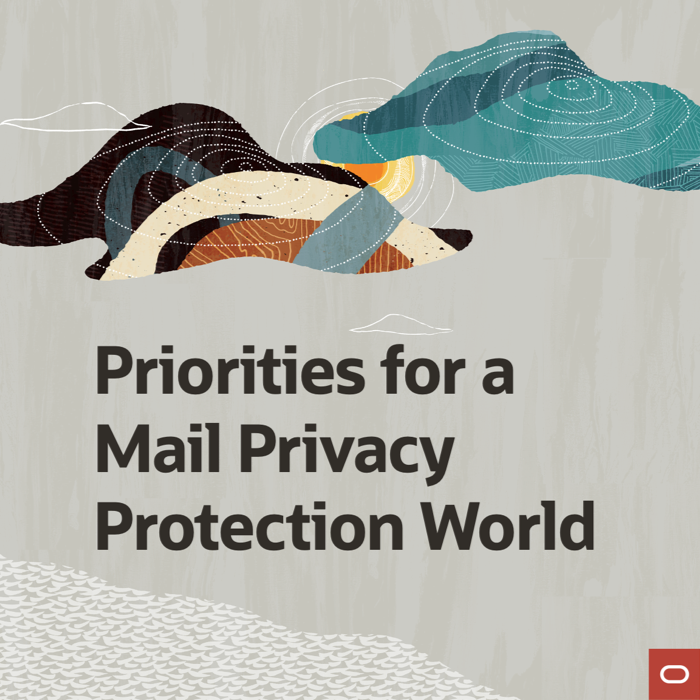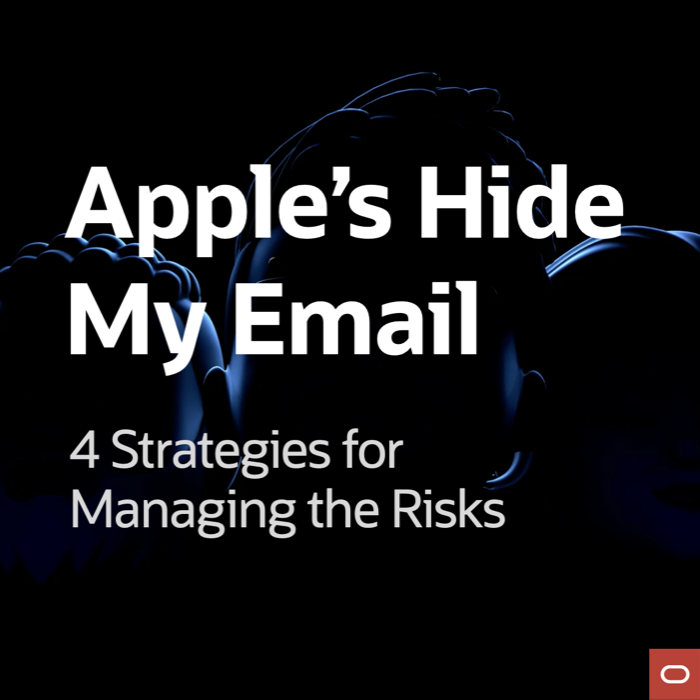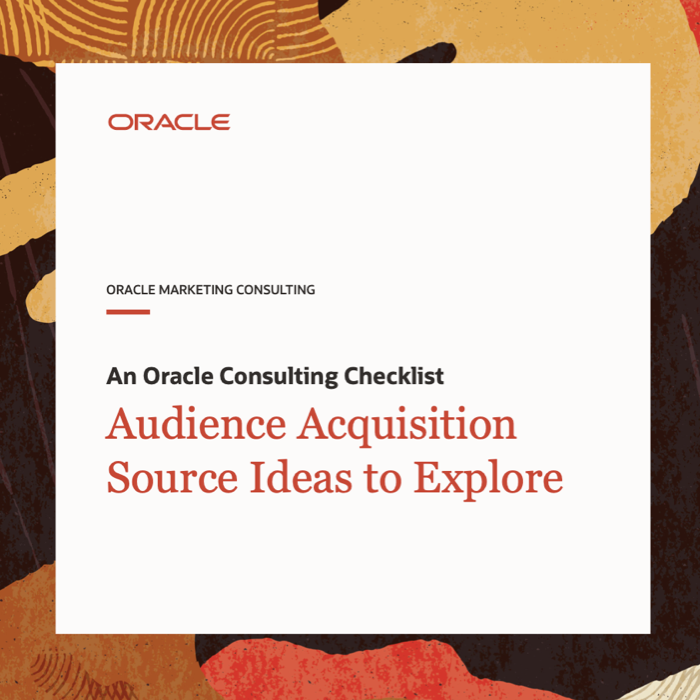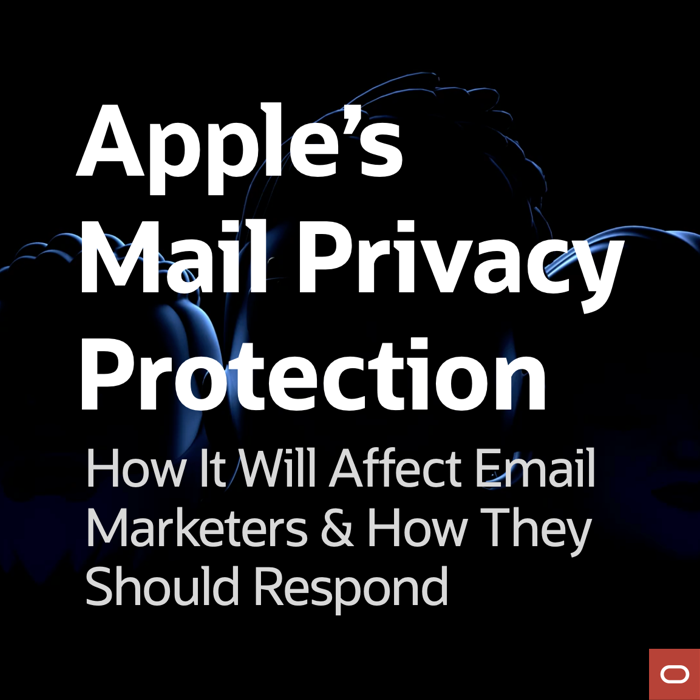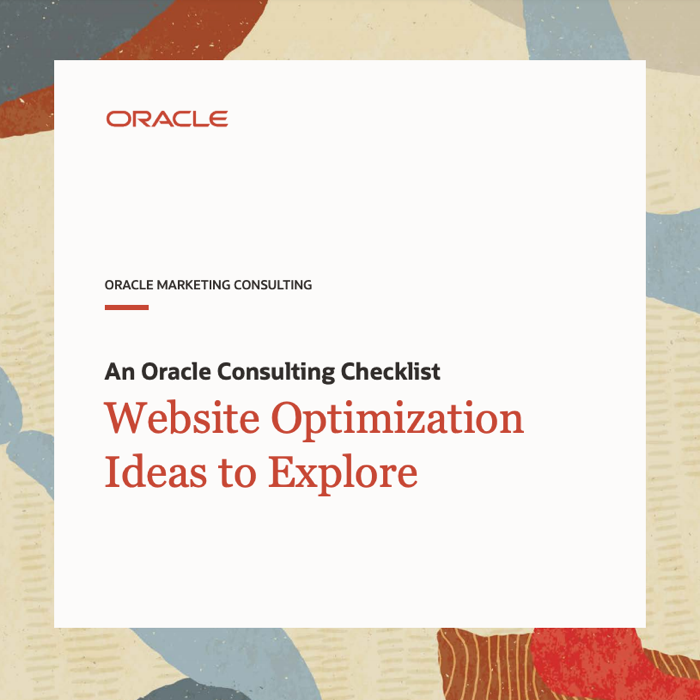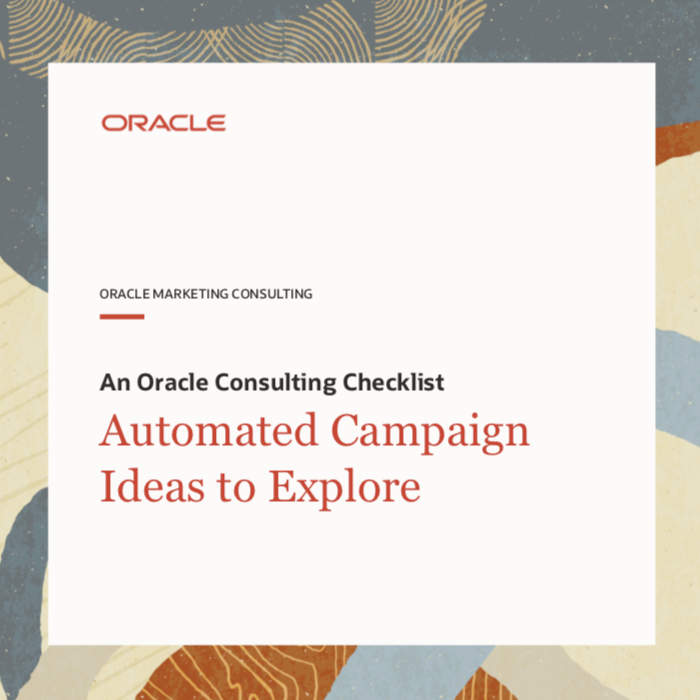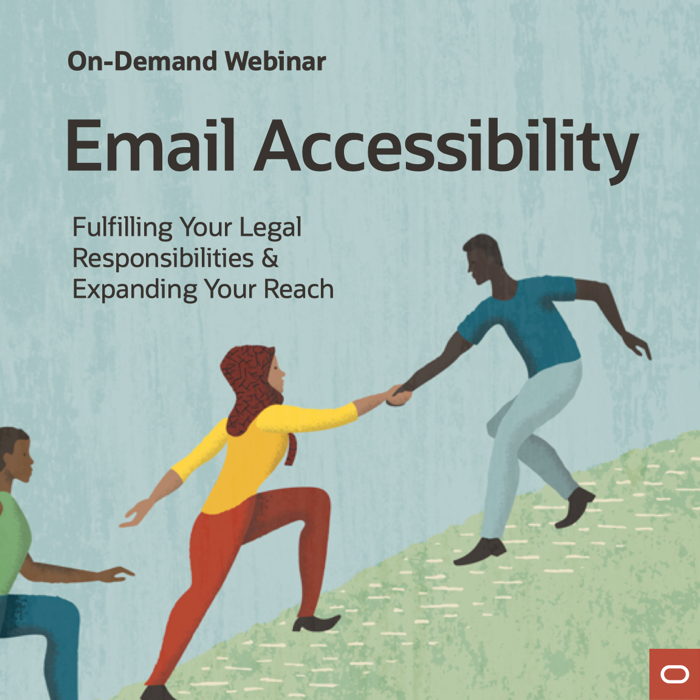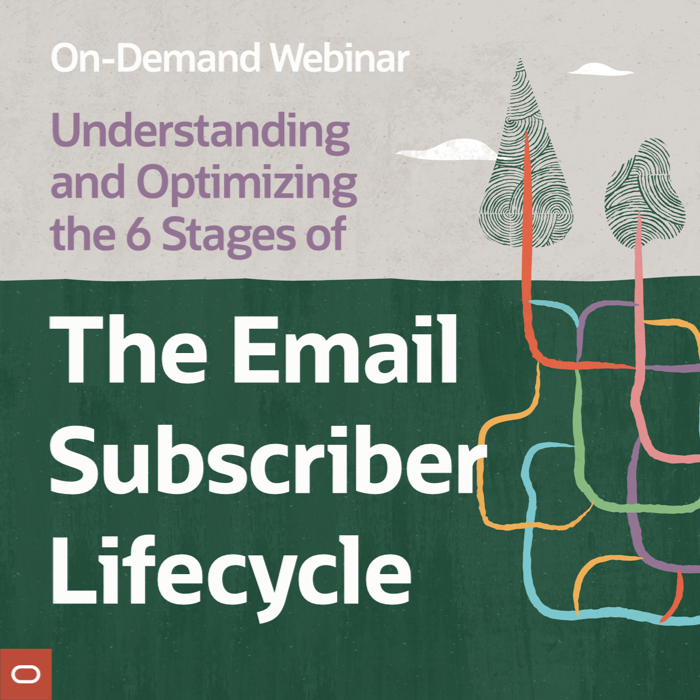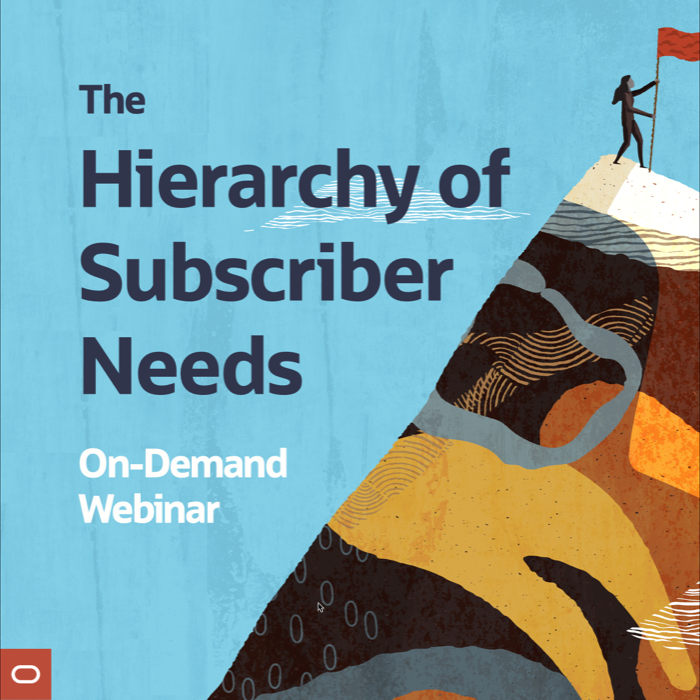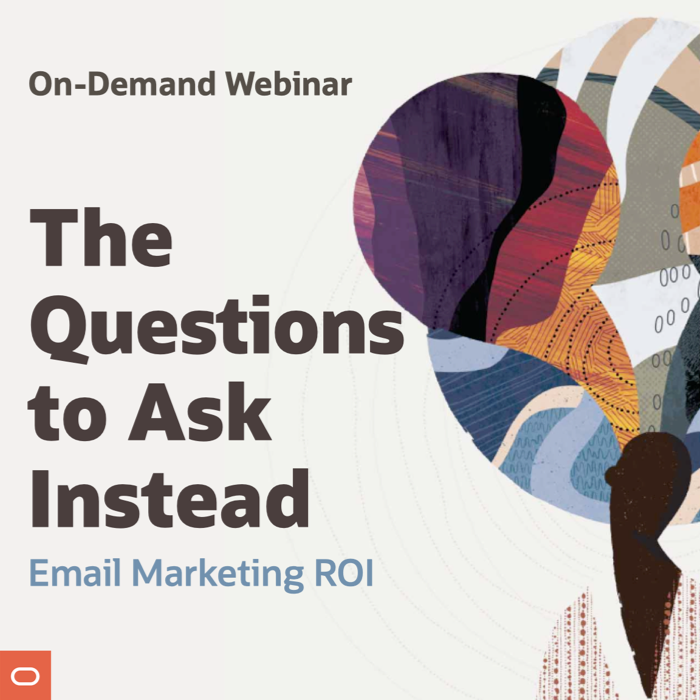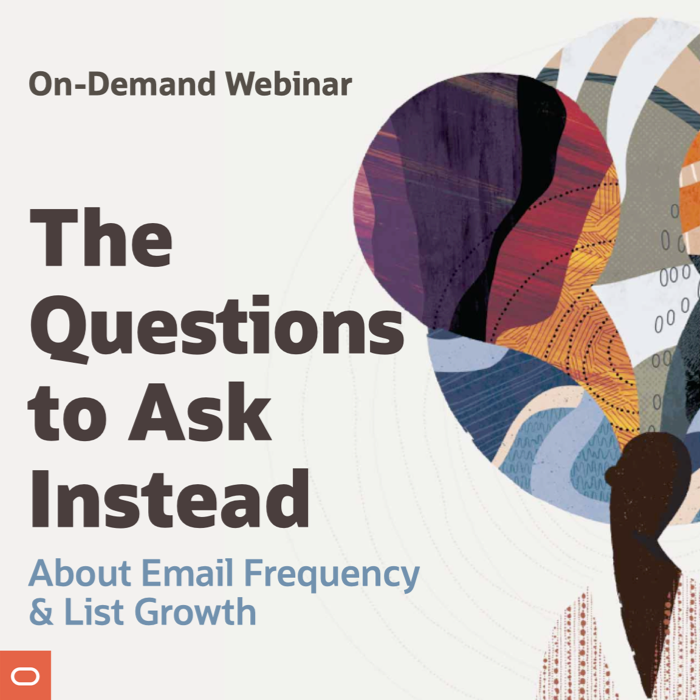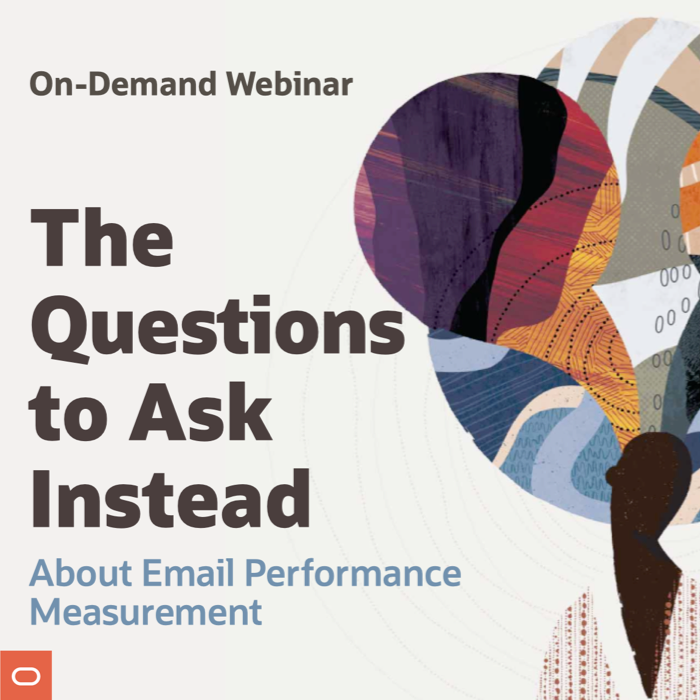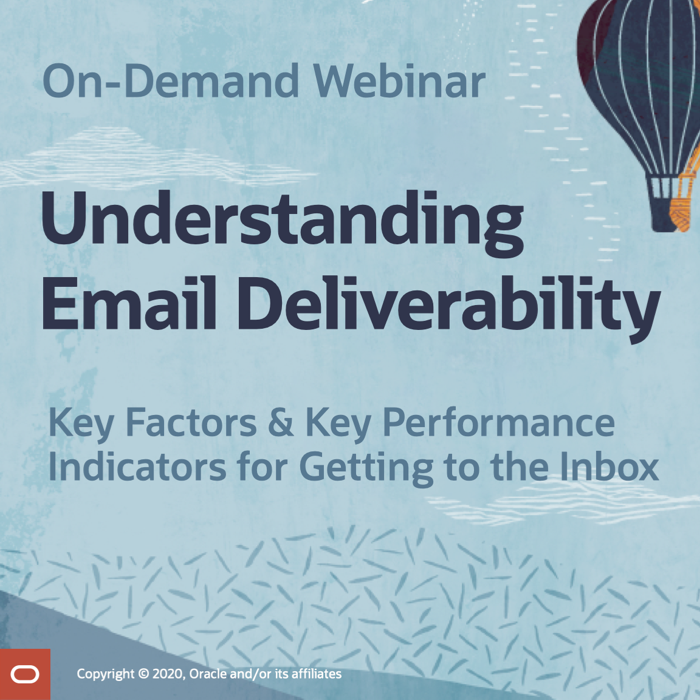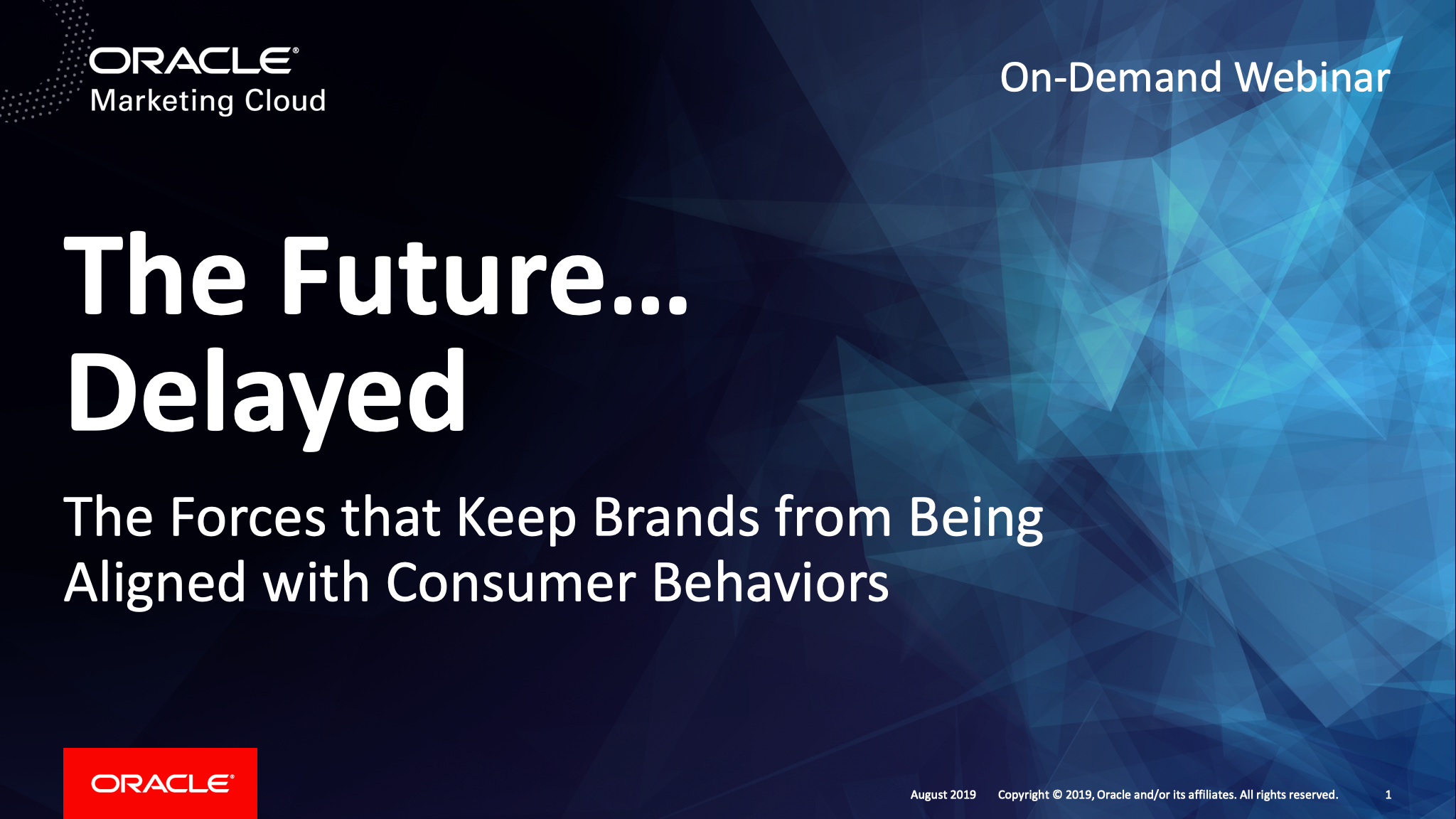Email Marketing Dictionary
The Glossary of Email Marketing Terms from Email Marketing Rules
10/10/80 split test: A type of A/B test exposing 10% of your subscribers to one version of an email or landing page and another 10% of your subscribers to another version, seeing which version performs better, and then exposing the remaining 80% of your subscribers to that winning version
25/25/50 split test: A type of A/B test exposing 25% of your subscribers to one version of an email or landing page and another 25% of your subscribers to another version, seeing which version performs better, and then exposing the remaining 50% of your subscribers to that winning version
50/50 split test: A type of A/B test exposing half your subscribers to one version of an email or landing page and the other half of your subscribers to another version and seeing which version performs better to inform future decisions
above the fold: The portion of an email that displays before a subscriber scrolls
A/B testing: Exposing a portion of your subscribers to one version of an email or landing page and another portion of your subscribers to another version to see which version performs better
absolute list growth: A view of list growth that accounts for both the number of new subscribers added and lost during a time period; also see acquisition list growth and real list growth
account-based marketing (ABM): Used primarily by B2B brands, this marketing approach focuses additional marketing and sales efforts on select high-value customers and prospects that represent outsized growth and expansion opportunities; sometimes called concierge marketing when used by B2C brands
acquisition: see list building
active consent: Permission indicated when a person explicitly acts to indicate that they want you to add them to your email list (e.g., checking an unchecked box)
active opt-out: When a subscriber removes themselves from your email list by unsubscribing, complaining, or deactivates their email account, turns off a relay email address, or uses a disposable email account that expires
acquisition list growth: A limited view of list growth that only accounts for the number of new subscribers added during a time period; also see absolute list growth and real list growth
alt text: Text coded into an <img> tag that is displayed when the image is blocked and when recipients mouse over the image, although support is not consistent across email clients
AMP for email: This code standard allows brands that use email service providers that support AMP for email to create interactive emails with live content that are delivered as a separate MIME-part that is rendered instead of the HTML or plain text MIME-part in inboxes that support AMP for email
animated gif: An image file that displays multiple images sequentially over time, sometimes in a loop
API: a software intermediary that allows your ESP and your other business applications to talk to one another
apology email: Sent in response to an error, mishap, or bad press, this email apologizes, explains any action taking place in response, and tries to make amends
auto-generated open: When the images in an email are loaded or rendered by a subscriber’s mailbox provider rather than by the subscriber viewing the email with images enabled
automated email: see triggered email
back-in-stock notification email: A message sent to an individual subscriber when a product comes back into stock in response to that person either browsing that product when it was out of stock or opting in to be notified when that out-of-stock product becomes available again
below the fold: The portion of an email that displays only after a subscriber scrolls
blocked: When an inbox provider prevents your emails from being delivered to their users
blocklist: A list of senders of spam, typically maintained by an independent organization (e.g., Spamhaus, SpamCop, SORBS), used by inbox providers to determine whether and where to deliver the email they send
body content: The text, images, and other content inside your email that becomes visible once the email is opened
bounce: see hard bounce and soft bounce
Brand Indicators for Message Identification (BIMI): A standard that allows brands that have authenticated their emails with Domain Keys Identified Mail (DKIM), Sender Policy Framework (SPF), and Domain-based Message Authentication, Reporting & Conformance (DMARC) to have their logo appear next to their sender name in inboxes that support BIMI
broadcast email: An email sent to all active subscribers
browse abandonment email: A message sent to an individual subscriber in response to that person browsing certain pages of your website but not making a purchase or adding anything to their shopping cart
browse retargeting email: see browse abandonment email
browserless email client: An email client, such as a smart watch or voice assistant, that doesn’t allow users to click email links to visit webpages
bulked: see junked
bulletproof button: A non-graphical button created from styled and linked HTML text inside a table cell with a background color that suffers minimal or no degradation when email images are blocked
business conversion: see sales conversion
California Consumer Privacy Act (CCPA): Passed in 2018 and enforced starting an Jan. 1, 2020, this law gives California residents the right to access the personal data a company had collected about them, forbid its sale, and have the data deleted, among other powers
California Privacy Rights Act (CPRA): Passed in 2020, this law amends and expands the California Consumer Privacy Act
call-to-action (CTA): What a message asks a subscriber to do, but more specifically the buttons and links subscribers click to take action
Canada’s Anti-Spam Law (CASL): Passed in 2010 and enforced starting on July 1, 2014, this law requires marketers to obtain permission before sending email, SMS, and other communications to Canadians (and technically even visitors to Canada), among other mandates
CAPTCHA: A group of anti-bot security mechanisms for forms
challenger: In an A/B test, the design or process you are testing against your existing champion, hoping to see an improvement in performance; also see champion
champion: In an A/B test, your existing design or process; also see challenger
checkout abandonment email: A message sent to an individual subscriber in response to that person starting the checkout process, but not completing it
cinemagraph: An image composed of both static images and one or more animated gifs, which give motion, often subtle, to a small portion of the overall picture
click: When a subscriber selects a link or linked image in an email with a mouse, trackpad, tap of a touchscreen, etc., and visits the associated webpage
click reach: The percentage of your subscribers that have clicked at least one of your emails during a period of time (e.g., month, quarter, or year)
click-to-open rate (CTOR): Calculated by dividing the number of clicks by the number of opens for a campaign, this measures the alignment between a subject line and body content, as well as how efficiently your body content converts openers into clickers
cold emailing: Sending a personal email to a person who hasn’t opted in to receive promotional emails from your brand and who you typically don’t know and haven’t ever emailed before
competitive intelligence: Monitoring the campaigns of your competitors and peers in the hopes of gaining insights from the content, timing, frequencies, and other aspects of their emails that you can use to improve your email marketing program
concierge marketing: When B2C brands use account-based marketing principles to serve their highest value customers; also see account-based marketing
confirmed opt-in (COI): see double opt-in
content filtering: When an inbox provider evaluates an email’s subject line and other content as part of its process to decide whether and where to deliver the mail
Controlling the Assault of Non-Solicited Pornography and Marketing Act of 2003 (CAN-SPAM): A US law regulating commercial email messaging that forbids deceptive messaging, requires senders to include a working unsubscribe link and their mailing address in every email they send, and requires senders to honor opt-out requests, among other things
co-registration: When a brand allows visitors to their website or users of their app to sign up to receive emails from sister brands or third-parties, often while or just after signing up for email from the brand
correction email: Sent in the wake of an email with one or more errors in it, this updated version of the email notes at the beginning of the subject line and/or body copy that the email is a correction or update
crisis messaging: Messages sent in response to natural disasters, social unrest, and PR disasters that answer key customer questions and provide essential information
customer data platform: A system that centralizes all customer data, cleans and maintains that data, makes that data readily available to marketing and other platforms, and resolves customer identity across channels, as well as potentially having analytic and campaign delivery functionality
dark mode optimization: A set of design choices that allow an email to display well in dark mode, which typically inverts the usual dark text on a light background into light text on a dark background
dedicated IP address: An IP address from which only one company sends email (typically at least hundreds of thousands a month), making that company solely responsible for the sender reputation of that address; also see shared IP address
defensive design: Design techniques that allow an email to communicate its message effectively when images and other progressive enhancements are blocked or unsupported
deliverability: All issues involved with getting commercial emails delivered to their intended recipients’ inboxes
delivered: When email makes it to the intended recipient’s inbox or junk folder, as opposed to being blocked
desktop-centric design: Email design approach that uses basic coding techniques to create a single email rendering that’s optimized for viewing on large-screened desktops, which can easily handle multi-column designs, small text, and tightly clustered links and buttons
disposable email address (DEA): Used to avoid exposing a person’s real email address, this address is only active for a short period of time (often only hours) or can only receive a few emails before the account expires and future emails sent to it hard bounce
double entry confirmation: Requiring a would-be subscriber to enter their email address a second time in a confirmation field on a subscription form and requiring that the two entries match in order to reduce entry errors
double opt-in (DOI): A subscription process where a new email address is only added to your mailing list after the email address owner clicks a confirmation link in a subscription activation or opt-in confirmation request email that’s sent to them after they opt in via a form or checkbox; also see single opt-in
earned media: Media content produced by media outlets, bloggers, consumers, and other end users of a brand’s products or services about that brand and distributed via any platform, such as publicity, social sharing, word of mouth, and ratings and reviews
email accessibility: The practice of ensuring that your emails can be read and understood by people with permanent vision, cognitive, motor, and other challenges and are compatible with the assistive tools they use, especially in terms of complying with the Americans with Disabilities Act (ADA) and other similar laws; also see inclusive design
email address append or e-append: When a brand uses a third-party data broker to add email addresses to its customer profiles that are missing them
email authentication: A variety of methods that help inbox providers accurately identify email sent by a brand, including Domain Keys Identified Mail (DKIM), Sender Policy Framework (SPF), and Domain-based Message Authentication, Reporting & Conformance (DMARC)
email automation: Triggered emails, personalization, dynamic content, and other tools that send emails or add content to emails on a one-to-one or one-to-some basis without manual intervention according to rules established by a brand
email client: An application or web interface that displays emails and allows users to reply, forward, and interact with the content of the message
email content calendar: A calendar indicating when you’ll send or launch each of your emails, plus when you’ll review or update your triggered and transactional campaigns
email conversion: When a subscriber completes the action requested by an email’s call-to-action
email fatigue: When a subscriber opens a brand’s emails less often because previous emails disappointed them or the email frequency overwhelms them
email list: A list of the email addresses and other records associated with your subscribers
email list productivity: The average value of each subscriber on your email list, expressed in revenue or profits
email marketing workflow: The people, process, and tools involved in conceiving, creating, testing, approving, sending, and analyzing the performance of an email
email metrics: Measurements of the effectiveness of your email campaigns and overall marketing program
email reader: see email client
email service provider (ESP): A commercial provider of email marketing services that allows their clients to manage their email lists, send messages, track the response of message recipients, and process signups and unsubscribes, among other capabilities
email template: Reusable, preformatted email file that includes all essential email elements, plus content blocks that can be switched out to create individual emails
email validation: Service or system that checks that an email address entered into an email address field is valid, including that it’s properly formatted and uses a valid domain name, among other potential checks
engagement: Opens, clicks, and other positive indications that a subscriber is finding value in receiving emails from a brand
engagement rate: Percentage of email recipients either opening or clicking an email
envelope content: The portion of an email that’s visible to subscribers before they open it, which may include the sender’s name, sender’s logo, from email address, reply-to email address, sent date, subject line, and preview text or content
exit intent: A modal that’s triggered when a visitor moves their cursor up near the top of their browser, signaling that they may be leaving the current site
explicit consent: see active consent
express consent: see active consent
expressed preferences: The topics, activities, products, services, and other things that subscribers tell you they are interested in; also see implied preferences
external benchmarks: An aggregation of performance metrics from many companies against which you compare your metrics; also see internal benchmarks
feedback loop (FBL): A mechanism through which inbox providers notify email senders of spam complaints by their subscribers using a standard Abuse Report Format (ARF), allowing senders to unsubscribe those subscribers
first-party data: Individual-level information that’s captured from a person’s interactions with your brand
footer: The HTML text at the bottom of an email that includes the promotional fine print, legal language, unsubscribe link, postal mailing address, and other details
forward to a friend (FTAF): Providing a link in your email that takes subscribers to a form that allows them to forward all or a portion of your email to one or more people they know
freemail: An email account that is available for free from Yahoo, Gmail, Outlook.com, or another inbox provider
from email address: The email address from which your emails are sent to your subscribers; in some email clients, this appears next to or instead of your sender name
from name: see sender name
from name extension: see sender name extension
General Data Protection Regulation (GDPR): Passed in 2016 and going into enforcement in 2018, this European Union law mandates stronger opt-in marketing permission standards, strengthens data security requirements and data breach disclosure rules, and gives consumers the rights to control the data collected about them, including the right to forbid the sale of that data and the right to have their data deleted
ghost button: A button that’s filled with the same color as the background and then has an outline color that contrasts with the color of the background
gift services footer: A secondary content block typically positioned just before the footer that pulls together links to gift guides, order-by deadlines, return policies, and other important seasonal buying information
global filtering: When an inbox provider junks and blocks all email sent by a brand to any of its email users
Gmail Annotations: see schema
graceful degradation: Using fallbacks to provide adequate email experiences when advanced coding, animated gifs, images, HTML, and other elements aren’t supported
granted media: Media content produced by a brand and distributed to an audience the brand developed via an open platform controlled by multiple third parties, such as email and SMS
graphical text: Text that is part of an image
hard bounce: When an inbox provider rejects an email because it was sent to an unknown or invalid email address; also see soft bounce
hard bounce rate: The percentage of sent emails for a campaign or over time that hard bounce
header: The upper portion of an email that includes your brand’s logo
hero: see primary content block
Hide My Email: A service provided by Apple that allows users to create one-off proxy email accounts that forward any emails they receive to the user’s primary email account until the proxy account is deactivated, causing any future emails sent to it to hard bounce
holiday header: A holiday-themed header design supporting the seasonal messaging of your emails
HTML text: Text from a limited number of fonts that are universally or widely supported across email clients
HTML version or MIME part: The HTML part of a multipart MIME email that supports images, a range of text formatting, and more; also see plain text part and AMP for email
HTML weight: The file size of the HTML coding of an email
image blocking: When inbox providers or subscribers don’t allow the images in an email to load
images-off mosaic: Using background colors on the cells of elaborate tables to create pixel art pictures that only display when images are blocked in your email
implied consent: see passive consent
implied preferences: The topics, activities, products, services, and other things that subscribers indicate they are interested in based on their interactions with your brand’s emails, website, app, and other channels; also see expressed preferences
inactive subscriber: A subscriber who has not opened or clicked in any of your emails in a long time; the opposite of an active or engaged subscriber
inactivity: A lack of engagement from a subscriber or customer over a period of time
inbox placement rate: The percentage of emails sent by a brand or from an IP address that reaches their intended recipients’ inboxes, as opposed to being blocked or junked
inbox provider: Providers of web- and app-based interfaces through which users access email mailboxes and read, compose, and manage messages
inclusive design: An approach to design whereby an email (or any other product or experience) is designed to be used by the widest audience possible, with particular consideration given to people with vision, hearing, cognitive, motor, and other challenges that are permanent (e.g., lost arm), temporary (e.g., broken arm), or situational (e.g., only one hand free) in nature
internal benchmarks: Past performance results against which you compare your current performance, either on an overall or on an individual-campaign basis; also see external benchmarks
IP warming: A process whereby a sender slowly builds up a sender reputation with mailbox providers on a new IP address by sending small volumes of email at first, and then sending progressively higher volumes over a period of several weeks
journey: One or more messages—often automated, but also segmented or personalized—that address a subscriber need or condition at or during a particular time; also, sometimes used to describe different mail streams or the messaging mix delivered to different personas
junked: When inbox providers route emails to a recipient’s junk, bulk, or spam folder
landing page: A webpage, app, and any other digital destination that subscribers are directed to when they click a call-to-action in an email
lapsed-customer email: see win-back email
leased media: Media content produced by a brand and distributed to an audience the brand developed via a closed platform controlled by a third party, such as Facebook, TikTok, and mobile app platforms
list building: The process of adding email addresses to your mailing list
list churn: Subscribers removed from your active mailing list because they unsubscribed, complained, or had to be suppressed due to long-term inactivity, or because their email address hard bounced
list churn: During a period of time, all the subscribers who are no longer mailable because they’ve unsubscribed, complained, become chronically inactive, or because emails sent to their address hard bounce
list hygiene: Ensuring that your email list is free of invalid and undeliverable addresses, role-based addresses, spam traps, unconfirmed addresses, and chronically inactive subscribers
list rental: Having a message sent on your behalf to an email list owned by someone else
list-unsubscribe: Coding that most email service providers automatically add to the <head> of their customers’ emails to enable native unsubscribe links offered by inbox providers
live content: Images and other email content that vary based on when the email is opened, what kind of device it’s opened on, and other factors
live text: see HTML text
loaded weight: see total weight
local-level filtering: When an inbox provider junks and blocks all email sent by a brand to one of its email users
mailbox provider: Email hosting companies that allow users to send, receive, and store messages and block spam on their behalf; sometimes referred to as an internet service provider (ISP); mailboxes are accessed via inboxes that are either also provided by the mailbox provider or by a third party
Mail Privacy Protection: A feature provided by Apple Mail that, when enabled, obscures a subscriber’s IP address, device information, forwarding behavior, and open behavior—that last being accomplished because Apple automatically prefetches and auto-generates opens for campaigns that subscribers don’t open
mail stream: The emails resulting from a single opt-in or preference selection
malicious signups: When a person signs up to receive email from a brand using an address they know to be false, inaccurate, or a spam trap for the explicit purpose of harming that brand’s sender reputation
marketing qualified lead: A subscriber or contact that is more likely than others to become a customer, but still needs nurturing before a salesperson gets directly involved
media queries: CSS that allows the rendering of an email’s content to vary depending on conditions such as screen size
mobile-aware email design: Email design approach that uses basic coding techniques to create a single email rendering that’s suitable for a range of screen sizes, but is deferential to smartphones
modal: Any of a variety of lightboxes, slide-ins, floating bars, and other boxes that appear on your website or in your app to appeal for a promotional opt-in or deliver some other message
multipart MIME (Multipurpose Internet Mail Extensions) protocol: An email format standard that allows you to bundle an HTML version, plain-text version, and other versions of your email together in one package; the receiving device’s capabilities or the subscriber’s preferences then determine which version is displayed
multivariate testing: This data-intensive form of A/B testing, simultaneously tests multiple variations in an email or landing page, allowing brands to not only test variations more quickly but to also better understand the interplay of different elements being tested
native unsubscribe link: Powered by list-unsubscribe coding, this unsubscribe link is provided by an inbox provider as an alternative to using the unsubscribe link provided in the sender’s email or reporting a sender’s emails as spam
navigation bar: A row, column, or grid of links to key pages on your website
never-active subscriber: A new subscriber who has never opened or clicked any of your emails
newsjacking: Leveraging the popularity of a news story, event, or cultural phenomenon to promote yourself or your company
offline call-to-action: These ask subscribers to visit a location, accept a calendar invite or set a reminder, contact your company via email address or phone number, or take some other action that doesn’t involve visiting a webpage or app
omnichannel orchestration: Responding to subscriber behaviors across channels by sending personalized, segmented, or triggered campaigns to them across various digital marketing channels, particularly those the subscriber engages with most
onboarding: The process of familiarizing new subscribers with your email program and your brand using your signup confirmation page and welcome emails
open: When a subscriber views an email and the images load or render, causing a tracking pixel to fire; sometimes, also when a subscriber clicks an email and no open was recorded because they or their inbox provider disabled the images in the email
openbait: These emails conceal their message by using vague and opaque subject lines and other envelope content with the goal of arousing subscribers’ curiosity, which usually comes at the expense of subscriber trust and future engagement
opener’s remorse: When a subscriber opens an email and either is disappointed by its content or, worse, feels like they were tricked into opening the email by a misleading or vague subject line and preview text
open reach: The percentage of your subscribers that have opened at least one of your emails during a period of time (e.g., month, quarter, or year)
open subscription form: An email signup form that’s accessible without making a purchase or signing into an account
opportunistic TLS: When senders enable this, your ESP will always attempt to send your email encrypted; but if an inbox provider can’t handle encryption, it will be sent unencrypted
opt down: When a subscriber chooses to receive a brand’s emails less frequently
opt-in confirmation page: The page that is displayed after a subscriber completes either a single or double opt-in and indicates to the person that they’ve successfully subscribed; also see signup confirmation page
opt-in e-append: When a brand uses a third-party data broker to add email addresses to its customer profiles that are missing them and then sends those customers an email to them asking for permission to email them in the future; also see opt-out e-append
opt-in email marketing: Sending email only to those who have given you permission to do so
opt out: When a subscriber either unsubscribes, reports your emails as spam, becomes chronically inactive, becomes unreachable due to a hard bounce, deactivates a relay email address, or otherwise withdraws permission for your brand to send them marketing emails
opt-out e-append: When a brand uses a third-party data broker to add email addresses to its customer profiles that are missing them and then sends those customers an email informing them that they will continue to receive emails from the brand if they don’t opt out; also see opt-in e-append
opt-out email marketing: Sending email to those who have not given you permission to do so and requiring them to unsubscribe or mark your emails as spam if they don’t want to receive future emails
opt over: When a subscriber opts into one of your other channels, such as social or mobile, during your email unsubscribe process
opt up: When a subscriber chooses to receive a brand’s emails more frequently, either by receiving current communications more often or opting in to receive additional communications
owned media: Media content that’s produced by a brand and distributed to an audience the brand developed via a closed platform controlled by the brand, such as a brand’s website, brochures, in-store signage, and events
paid media: Media content produced by a brand and distributed to an audience developed by a third party via a closed platform controlled by that third party, such as TV ads, radio ads, newspaper ads, billboards, search ads, and display ads
passive consent: Permission indicated when a person does not act to keep you from adding them to your email list (e.g., not unchecking a pre-checked box)
passive opt-out: When a subscriber must be removed from your active mailing list because they haven’t opened or clicked your emails for so long that they’re considered chronically inactive and have to be suppressed, or a mailbox provider deactivates the email address due to a lack of logins
permission: Actively or passively agreeing to receive promotional email
permission reminder: Included at the bottom of an email, this statement reminds the subscriber of how and when they opted in to receive the sender’s emails and an explanation of why they received this particular email
personalization: Including content that’s unique or particular to the subscriber in the envelope or body content of an email based on their geography, demographics, behavior, or other factors
plain text version or MIME part: The text-only part of a multipart MIME email that supports only text and some basic symbols
platform privacy: As opposed to privacy regulations, these privacy rules and constraints are imposed by inbox providers and other technology providers
post-click metrics: Browsing, carting, and other activities on your site that take place after someone clicks through one of your emails or other marketing campaigns
preference center: Webpage that displays a subscriber’s email address and other details, such as profile information (e.g., zip or postal code, etc.) and communication preferences (e.g., topics of interest, etc.), and allows them to make changes as well as unsubscribe
preheader text: Visible or hidden HTML text positioned at the very top of an email’s body content that is used to control what appears as preview text; also see preview content
preview content: Selected by the inbox provider or controlled by the sender using schema, JSON, or other coding, this content is shown in the inbox instead of preview text
preview pane: A window in some email clients that allows subscribers to view a smaller portion of an email than if the email were opened in its own window
preview pane banner: A banner placed right above or right below the header (or navigation bar, if used) in the body of an email so that the banner always appears above the fold
preview text: A portion of the first text from inside the email that some email clients display after the subject line in the inbox, when highlighting a new email’s arrival, or in other situations; part of an email’s envelope content
primary content block: The main message of an email, usually positioned at the top and larger than other messages in the email
private IP address: see dedicated IP address
product grid: A multi-column and usually multi-row layout where each grid cell contains a product image and other information, such as product name, brand, and price
progressive enhancement: A technique that provides improved rendering or advanced functionality in certain email environments; also see defensive design
progressive profiling: Collecting additional demographic data and information about interests from subscribers by periodically prompting them to answer questions, take quizzes, or interact with a guided selling program
proof of consent: Details on how, when, and where a subscriber opted in to receive emails from a brand
proxy email address: An email addresses for an email account, such as those created by Apple’s Hide My Email service, that forwards any emails it receives to another email account and then deletes the email
quality assurance: Ensuring that email content is error-free and functions properly and that the intended subscribers receive that content at the intended time
rate limiting: When an inbox provider slows the rate or volume at which they accept a sender’s emails, or when a sender or email service provider manages the rate at which they send email to an inbox provider to avoid throttling or bounces
reactivation: see reengagement
reactivation email: see reengagement email
reading pane: see preview pane
real list growth: An advanced view of list growth that accounts for both estimated value of new subscribers added and the value of subscribers lost during a time period; also see absolute list growth and acquisition list growth
real-time content: see live content
re-confirmation email: see re-permission email
recovery module: A secondary content block usually positioned right before the footer that contains many links to different product categories, brands, or other areas of your website with the intent to appeal to subscribers who were uninterested in the other calls-to-action in the email
reengagement: Getting a subscriber to open or click one of your emails after a period of having not done so
reengagement email: A message sent to an individual subscriber in response to that person having not engaged with your emails in a long time in an effort to get them to engage again
relevance: How valuable a subscriber thinks your emails are—which is largely determined by how many emails you send, when they arrive, their content, and how they look and function within whichever email client is being used
relay email account: Created by services like Apple’s Hide My Email, this account doesn’t store any of the emails it receives but instead forward them along to another email account until the relay account is deactivated, at which point any future emails sent to it hard bounce
rendering: How an email displays and functions in a particular email client; this can vary wildly from email client to email client
re-order email: A message sent to an individual subscriber in response to a product that person purchased being near or at the end of its recommended or typical lifespan, maximum number of usages or servings, etc.
re-permission email: A message that asks a subscriber to reconfirm their subscription by clicking a link in the email in order to remain on your active mailing list
replenishment email: see re-order email
reply-to email address: Replies to your emails go to this address instead of to your from email address
request for proposal (RFP): A document that solicits proposals from email service providers by asking questions about their platform’s capabilities and their business’s support offerings as a way of narrowing down potential choices
resend: The tactic of sending an email again, often with minimal changes, to a subset of the original audience based on whether or not they opened or clicked it the first time
responder rate: see unique click rate
responsive email design: A variety of email design approaches that use media queries and other progressive enhancement techniques to control the formatting, layout, and display of email content depending on the subscriber’s screen size; these approaches include adaptive design, spongy or hybrid design, responsive-aware design, liquid or fluid design, and fully responsive design
role-based email address: An email address that begins with info@, webmaster@, sales@, press@, support@, or a similar function-based descriptor denoting that messages sent to this address are likely seen by or forwarded to more than one person
sales conversion: When a customer or prospect makes a purchase or takes another action of monetary significance
sales qualified lead: A subscriber or contact that has demonstrated that they’re ready for direct sales follow-up
schema: Leveraging standard markup language from Schema.org, this code allows email marketers to replace their usual preview text with preview content containing certain content or calls-to-action from their email’s body content, to populate banners within the email client interface, and more
screen reader: An assistive technology that renders text and image content as speech or braille for people with temporary or permanent visual or cognitive challenges; with difficulty reading a language they can speak; or who simply prefer to engage with the content this way
seasonality: For an industry or business, the natural peaks in demand, which can be amplified by email marketing
secondary content block: The other message(s) in an email, usually following and smaller than the primary message
secondary navigation bar: Typically positioned right below your primary navigation bar, this one provides deeper navigation into one of your primary navigation bar links, links to seasonal merchandise and content, or links that support the primary message or theme of the email
second-party data: Individual-level information about one of your customers or prospects that’s acquired from a partner that has a direct relationship with that person
segmentation: Sending a particular message only to those subscribers who are likely to respond favorably based on geographic, demographic, psychographic, or behavioral factors; using a suppression list to avoid sending a particular message to certain subscribers; or sending a message at a time based on subscribers’ time zones or geographic regions
self-segmentation: Through clear envelope and body content, multiple calls-to-actions, and other methods, allowing subscribers to clearly indicate their interest (or lack thereof) in the topic of your email or your email’s CTAs
sender name: The name that appears in the from line in an email client; part of an email’s envelope content
sender name extension: Descriptors or modifiers added to your brand’s sender name that change based on the campaign type, seasonality, and other factors
sender reputation: A reflection of your trustworthiness as an email sender that is affected by spam complaint rates and other factors that inbox providers use to determine whether to deliver, junk, or block your email
send time optimization: Using the open and click times of individual subscribers to determine when certain emails will be mailed to them
shared IP address: An IP address from which multiple companies send email, with all of them contributing at least partially to the sender reputation of that IP address
share with your network (SWYN): Functionality that allows subscribers to share content from your email on social media
shopping cart abandonment email: A message sent to an individual subscriber in response to that person leaving one or more unpurchased items in their shopping cart
short-supply email: see re-order email
signup confirmation page: In a double opt-in process, the page displayed after a person signs up to receive promotional emails from a brand by entering their email address in a promotional email signup form or checking (or not unchecking) a signup box that then asks them to confirm their signup by clicking a link in the opt-in confirmation request email sent to them; also see opt-in confirmation page
single opt-in (SOI): A subscription process where a new email address is added to your mailing list without requiring the owner of that email address to confirm definitively that they knowingly and willingly opted in; also see double opt-in
snippet text: see preview text
social media bar: A row of social media icons that link to your brand’s pages on those social media sites
social sign-in: Using the login information from a social network to sign into a third-party website
soft bounce: When an inbox provider rejects an email because of a temporary condition such as the recipient’s mailbox being full; also see hard bounce
spam complaint: When an email recipient hits the Report Spam or Junk button, indicating to their inbox provider that the email was unwanted or irrelevant and that future emails from the sender are to be blocked
spam trap: These email addresses are used by inbox providers and blocklist operators (e.g., Spamhaus, SpamCop, SORBS) to identify spammers
spoof: When spammers, phishers, and others falsify the sender name and address of an email, making it appear to come from a reputable person or brand in an attempt to deceive the recipient
sponsored email campaign: see list rental
statistically significant: Having enough data from a test that the results are meaningful rather than simply the result of chance
still image: An image that doesn’t change over time, unlike an animated gif
styled alt text: Alt text that has had its font type, size, weight, or color changed through the application of inline CSS styling
subject line: Text that appears in the inbox that senders use to indicate what an email is about
subscriber acquisition source: The form or mechanism through which a subscriber opts in to receive emails from a brand, or the ad, sign, form, or other messaging that drove them to opt in
subscriber lifetime value: The cumulative revenue (or profit) generated by a subscriber during their time on your list
subscriber’s remorse: When a new subscriber quickly regrets signing up, typically because the reality of your email program is not what they were expecting
suppression list: A list of subscribers to whom you don’t want a particular message to be sent, or that you don’t want any messages sent to
swipe file: A record of your top-performing emails, subject lines, calls-to-action, content blocks, landing pages, and other email elements that you return to for learnings and inspiration
system text: see HTML text
targeting: Achieving at least one facet of sending the right message to the right subscriber at the right time
third-party data: Individual-level information about one of your customers or prospects that’s acquired from organizations that do not have a direct relationship with that person
throttling: see rate limiting
total clicks: The number of times the links or linked images in an email were selected by subscribers, who then visited the associated landing page; a method of measuring clicks that includes repeated clicks on a link by an individual subscriber
total opens: The number of times the images of an email were loaded or rendered; a method of measuring opens that includes repeated opens by an individual subscriber
total weight: The file size of the HTML coding of an email plus the total file size of all the images used in the email
transactional email: A message sent to a current or former customer or user, regardless of whether they are a subscriber, in response to a transaction or administrative request made by that person or in response to a security, legal, or other company situation that may affect that person
triggered email: A message sent to an individual subscriber in response to an action taken by that person (e.g., cart abandonment), to a lack of action (e.g., reengagement), to the arrival of an event (e.g., birthday), or to the requirements or instructions of an internet-connected device (e.g., battery low)
unique click rate: Percentage of email recipients clicking the email at least once
unique open rate: Percentage of email recipients opening the email at least once
unknown user: An email address that is invalid, either because the address never existed or because the address was abandoned
unsubscribe: When a subscriber submits a request to you to be removed from your email list
unsubscribe process: The experience your brand creates for subscribers who want to remove themselves from your email list
unsubscribe survey: A survey that’s part of your unsubscribe confirmation page that asks former subscribers why they opted out as a way of gaining insights into potential problems with your email program that could be addressed
video gif: A compressed, streaming animated gif capable of video-quality frame rates
voice assistant: Technology that allows people to ask questions, search for content, and engage with email clients and other apps using only their voice and then receive their answers, results, and content via audio
webmail: An email client accessible via a web browser
welcome email: A message automatically sent to a new subscriber just after they’ve opted in that welcomes them to your email program and seeks further engagement
welcome email series: Multiple emails automatically sent to a new subscriber over time that seek to nurture a positive brand image and maximize engagement
win-back email: A message sent to an individual subscriber in response to that person having not made a purchase in a long time in an effort to get them to make a purchase again
withhold study: When you do not send promotional emails to a random group consisting of 1% to 10% of your subscribers for a while (typically around 3 months) and then compare their activity across all channels to subscribers who received emails
unique clicks: The number of subscribers who selected a link or linked image in an email at least once and visited the associated landing page; a method of measuring clicks that only counts the first click on a link made by individual subscribers, ignoring any subsequent clicks on that same link
unique opens: The number of subscribers who loaded or rendered the images of an email at least once; a method of measuring opens that only counts the first open of an email made by individual subscribers, ignoring any subsequent opens of the same email
universal control group: Doing a withhold study on an ongoing basis year-round and cycling subscribers in and out of the holdout group to keep from withholding email from individuals for too long
unsubscribe confirmation page: Webpage or app messaging that follows a successful email unsubscribe
unsubscribe page: Visited when subscribers click the Unsubscribe link in your emails, this webpage allows your subscribers to remove themselves from your email list, in addition to other potential options
zero-party data: Individual-level information that is given directly to your brand by the person
 Email Marketing Rules
Email Marketing Rules


